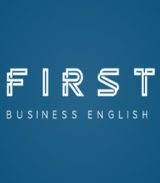
Describing Statistics And Trends In Business
- Posted by Ryan Anthony
- Categories B1-B2 Lesson Blog, Blog
- Date April 5, 2025
Types of Graphs and Charts
Different types of visuals are used to present data:
-
Line graph – shows change over time
-
Bar chart – compares quantities across categories
-
Pie chart – shows parts of a whole
-
Table – presents numbers in rows and columns
Each type has a specific purpose. For example, line graphs are useful for showing sales trends over months, while pie charts help show the percentage of market share.
Describing Change
To describe changes in graphs and charts, we often use verbs, adjectives, and adverbs that express movement or difference.
Verbs showing upward trends (increases):
-
rise
-
go up
-
increase
-
climb
-
grow
Example:
“Sales rose by 10% in the first quarter.”
Verbs showing downward trends (decreases):
-
fall
-
drop
-
go down
-
decline
-
decrease
Example:
“Profits dropped slightly in March.”
Verbs for stability or no change:
-
remain stable
-
stay the same
-
level off
-
flatten out
Example:
“Production levels remained stable throughout the year.”
Useful Adverbs and Adjectives
Use adverbs and adjectives to describe the degree of change:
-
slightly
-
gradually
-
steadily
-
sharply
-
significantly
-
dramatically
-
slowly
-
rapidly
Example:
“The number of users increased dramatically after the new app launch.”
“There was a slight decline in customer satisfaction.”
Useful Phrases in Business Context
-
“According to the chart…”
-
“This graph illustrates the sales trend over six months.”
-
“As we can see from the line graph…”
-
“There was a significant increase in Q2.”
-
“The pie chart shows how the market is divided.”
-
“Figures have remained steady since last year.”
-
“We experienced a sharp drop in revenue.”
-
“Let me draw your attention to the dip in September.”
Example Paragraph
This bar chart shows our company’s quarterly sales performance for the past year. As you can see, sales increased gradually in Q1 and Q2, rising from $20,000 to $35,000. However, in Q3, there was a sharp drop of 25%, mainly due to supply chain issues. By Q4, figures recovered slightly, climbing back to $30,000. Overall, the trend shows strong performance in the first half of the year, followed by a brief decline and partial recovery.
Conclusion
Being able to talk about statistics and trends using the correct vocabulary and structures is essential in business English. Whether you’re in a meeting, writing a report, or giving a presentation, clear and accurate descriptions of data help you communicate effectively. Practice describing different types of charts and use a variety of phrases to make your language more precise and professional. To learn more or to practice your business English skills simply book a lesson with us at First Business English.
About First Business English
First Business English is a premium business English language online education center that provides individuals and groups the opportunity to learn Business English that enhances their careers and lives through a structured Business English curriculum. Contact Us
Ryan Anthony is an enthusiastic, self-motivated, reliable Online Business English language tutor who is learner focused and highly adaptable. Bachelor of Business Studies Degree educated with extensive IT Support, Call Centre Management, Retail Management and English Language Teaching experience.
You may also like

The Pros And Cons Of Freelancing As A Career

The Effect Of Prices And The Cost Of Living

